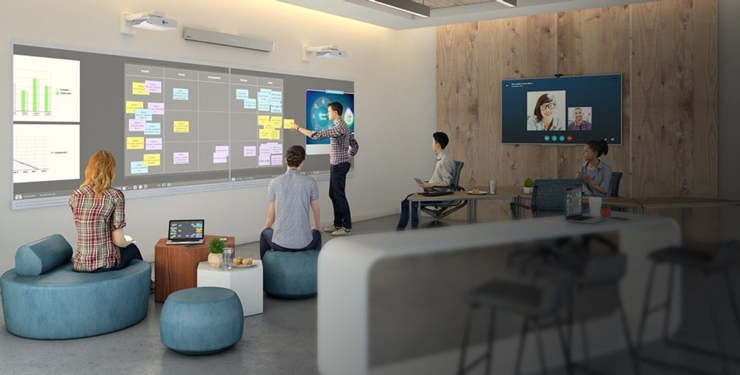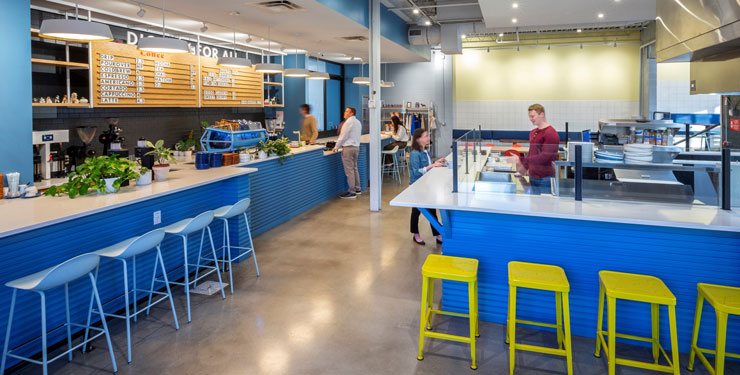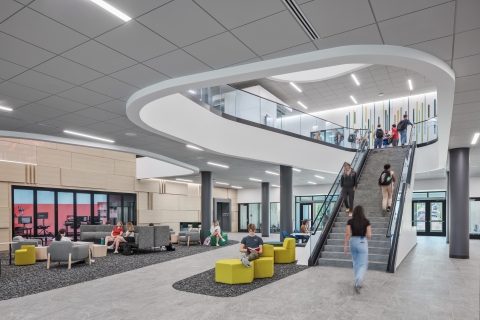
Beyond Efficiency and Effectiveness: Understanding and Measuring the Work Experience
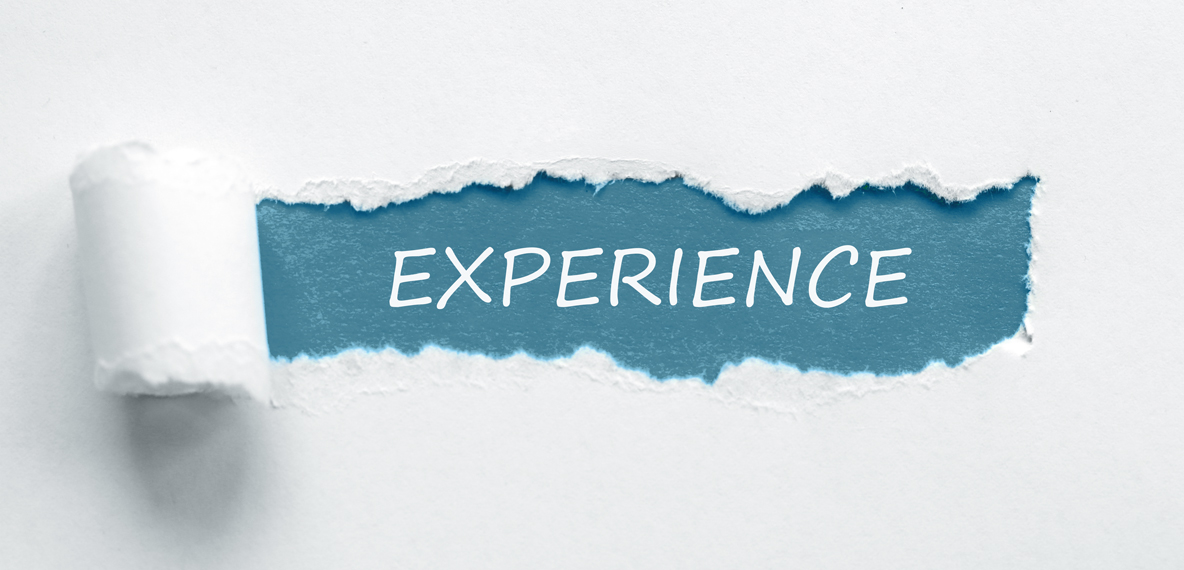
An experience is the culmination of a person's perceptions, emotions, thoughts, and reactions to a particular situation, event, or series of events. People’s experiences are being considered more now than ever; we hear about them regarding patient experience, shopper experience, and work experience. The recent sharpening of focus on work experience, not to be confused with the amount of experience someone has doing a particular type of work, has grown due to the global questioning and shift in how people think about work. While some companies began allowing employees to temporarily work remotely away from the traditional workplace over the past decade, the COVID-19 pandemic led to explosive and rapid change due to its impact on many people and organizations all at once. It has forced swift, significant change regarding the primary elements of a work experience—space, technology, and people.
Why Experience Matters
In pondering “experience,” we have used the “Three Es” Framework, a widely used conceptual framework for judging project performance. Experience is one of three crucial and interconnected concepts of the Three Es framework, with efficiency and effectiveness being the other two. While many organizations are all too aware of effectiveness and efficiency, experience is, and has historically been, the overlooked third E… until now.
As rapid technological improvements have allowed people to become more effective and efficient in their work, their lives have become increasingly complicated. The work experience has not kept pace with the vast gains in effectiveness and efficiency. We all “know” that work experience plays a crucial role in organizational culture and identity, innovation and creativity, productivity and performance, employee well-being and satisfaction, learning and development, and talent attraction and retention. However, while organizations may have a firm grasp on the efficiency and effectiveness of their organizations, right now, they don’t have a precise measure of their organization’s work experience or how to influence it to drive strategic results.
Measuring Experience: Introducing Key Experience Indicators (KXIs)
Fully understanding the work experience necessitates understanding the experiences of individuals, teams, managers, and the overall organization. Since today’s distributed work experience is interconnected across multiple places, it is also necessary to understand the work experience across the work ecosystem of the central workplace, remote locations, both physical and virtual, and the home.
With this newfound focus on work experience, we must recognize how it has been relatively understudied and understood compared to efficiency and effectiveness. Where effectiveness and efficiency have been measured and tracked via Key Performance Indicators (KPIs), we envision measuring and tracking experience via Key Experience Indicators (KXIs). We believe KXIs, as a measure of work experience, could provide what even the federal government’s Office of Management and Budget is seeking, “a coordinated and integrated set of indicators to measure, monitor, and improve organizational health and performance.”
Traditionally, KPIs such as cycle time, throughput, and employee productivity have been used to measure efficiency and effectiveness. In contrast, we believe that KXIs such as feeling valued, trust, motivation (individual), roles, collaboration, innovation (team), communication, transparency, and equity (organizational) are just some of the metrics that can be used to measure work experience. While such soft metrics are difficult to measure solely via sensors or other quantitative means, we overlay qualitative responses from employees to create a complete picture of the work experience. We can use pulse survey data and background AI analysis to measure and scan communications and internal posts for experiential sentiment.
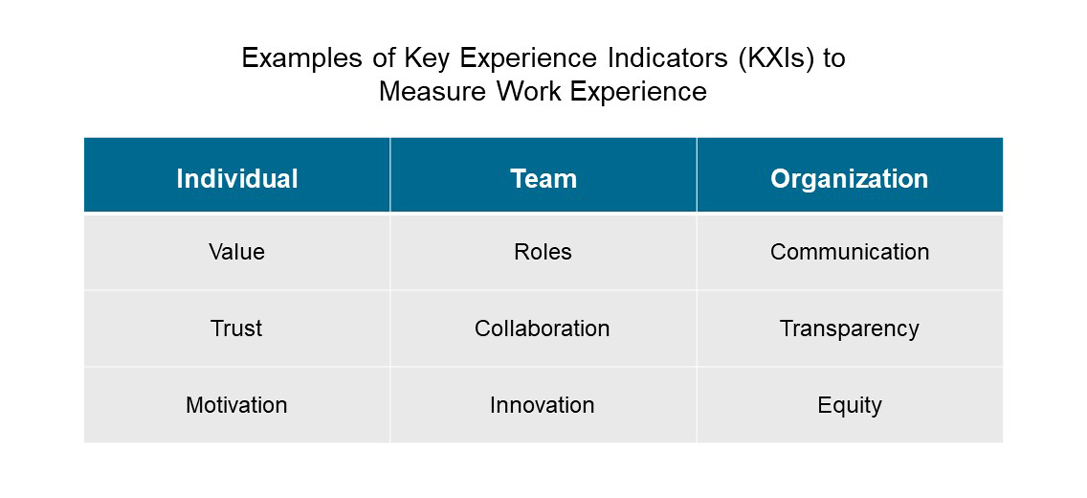
Integrating KPIs with KXIs leverages efficiency and effectiveness with experience, a crucial consideration for organizations when creating enriching, functional, and sustainable workspaces. To evaluate an organization's work experience, BHDP utilizes a mixed-methods approach, integrating both quantitative and qualitative measures. This comprehensive approach ensures that organizations don’t rely solely on quantitative measures and instead remember to consider employees' perceived experiences. It also ensures they are not leaning too much on qualitative measures, which can lead many organizations to make sweeping decisions based on anecdotal evidence and individual biases. We do so by uncovering the specific KXIs important to each organization and what KPIs and metrics they are tracking or need to start monitoring. We then “program” the pairings of metrics and user input that can best tell the story for each KXI. Some newly developed methods enable us to collect and connect these disparate types of information and draw insights from them.
With new spatial intelligence, we can go beyond traditional sensors' simple headcount and dwell time to see real-time and historical movement and behaviors of employees to better understand how they use space and how it impacts their work experience. Moving beyond long-form surveys to more interactive pulse surveys focused on specific aspects of the work experience allows us to fill in the gaps that quantitative data can’t tell us. This triangulation, through overlapping methods of collecting various data types, is necessary to tell the whole story and for better-informed decision-making.
Using People-Centric Data to Design Better Work Environments
These tools help to provide a more holistic understanding of the impact of physical space on human behavior and experience, along with the interconnected elements of technology and policy. Such integration of tools allows us to visualize and understand the quantitative data of where people are coming from and going to, when and how that happens, and with whom they use space, along with the qualitative insights of what they are doing and why they are choosing to do so. This holistic understanding of the work experience is essential in envisioning work environments that are not only effective and efficient but also create an enriching and meaningful experience for those who inhabit them.
If you’re interested in measuring the work experience to inform future decision-making, please email [email protected] or fill out the form below.
Let’s get to work. Complete our contact form today.
Author
Content Type
Date
August 02, 2024
Practice
Topic
Innovation
Workplace Strategy


